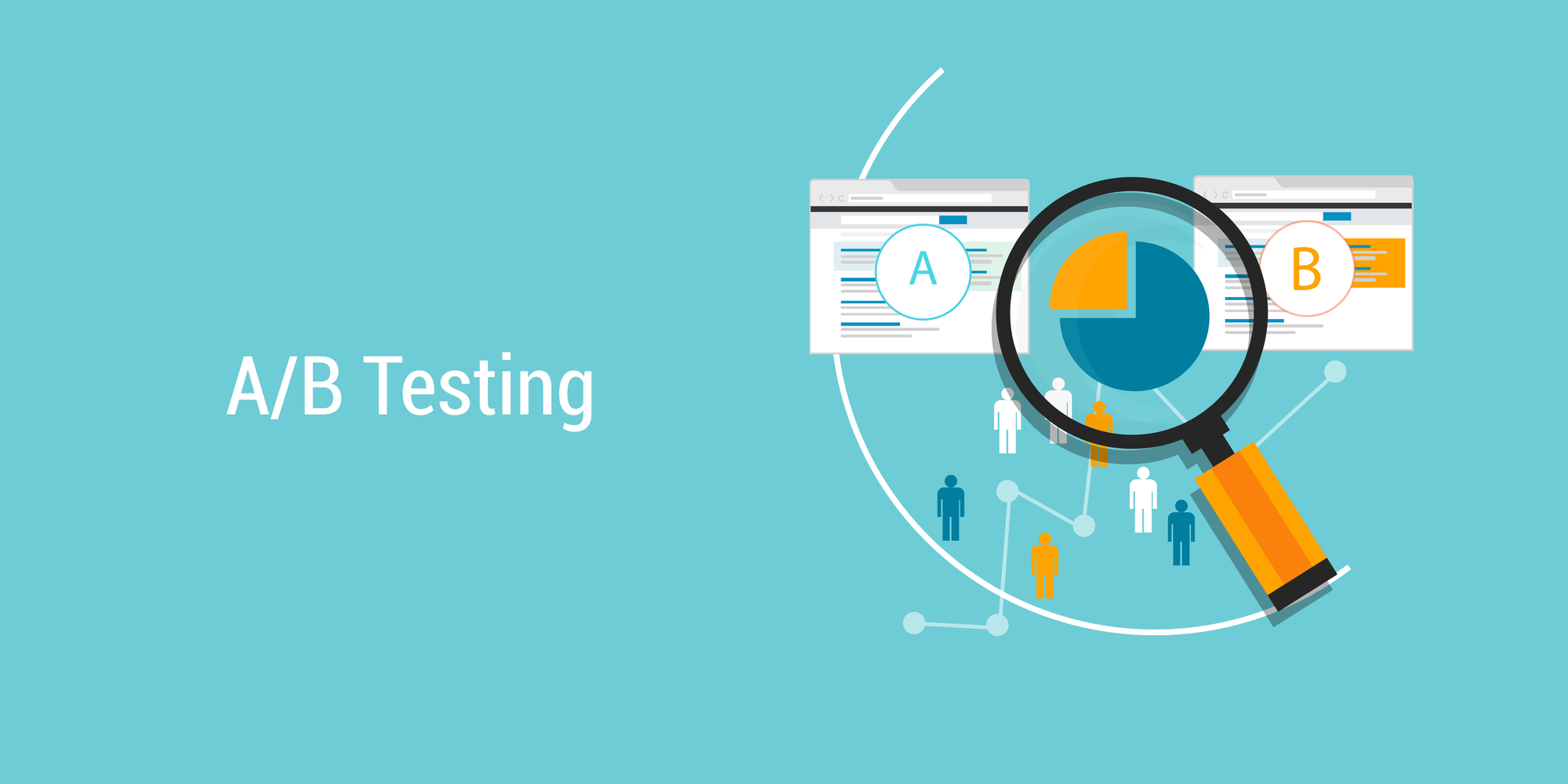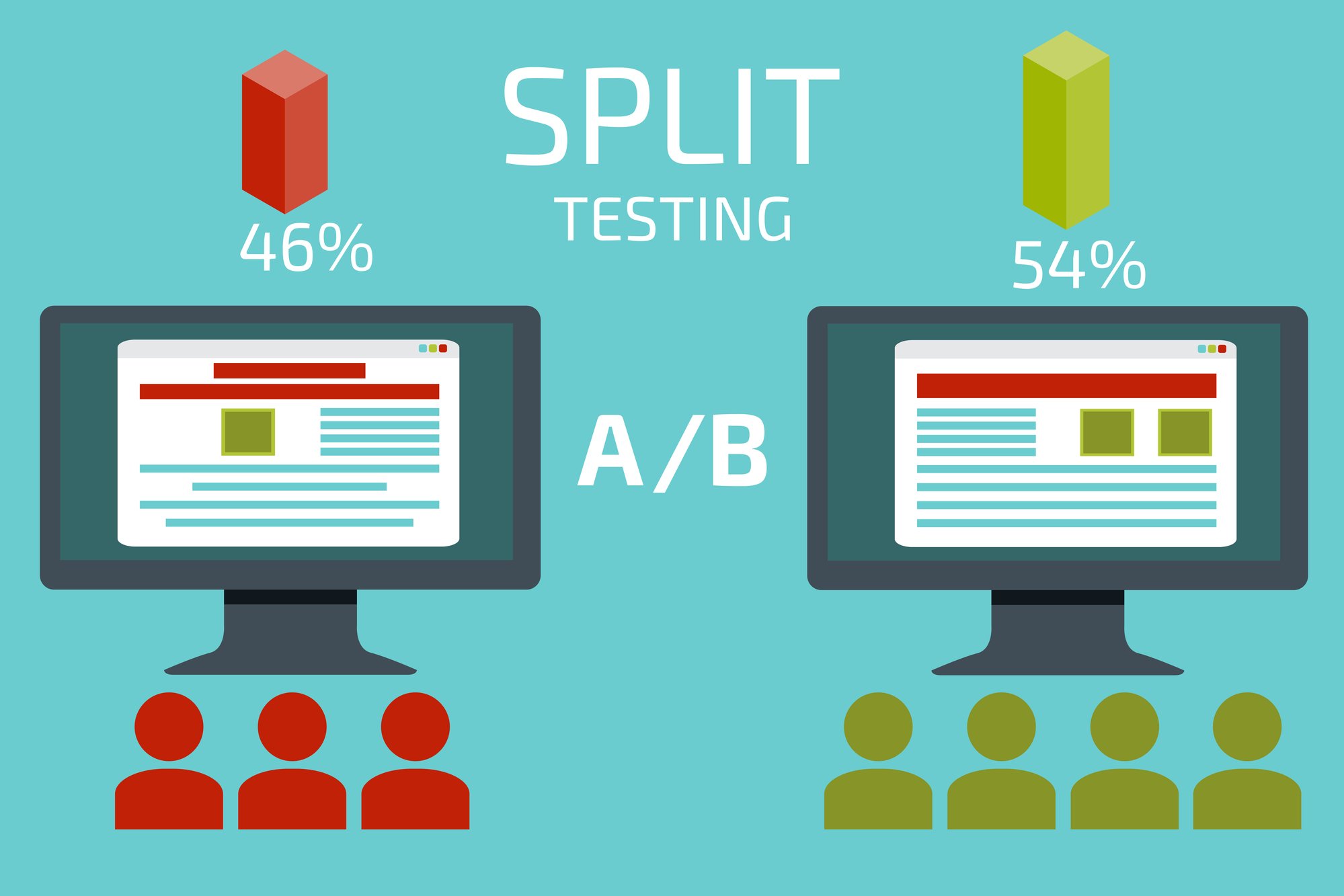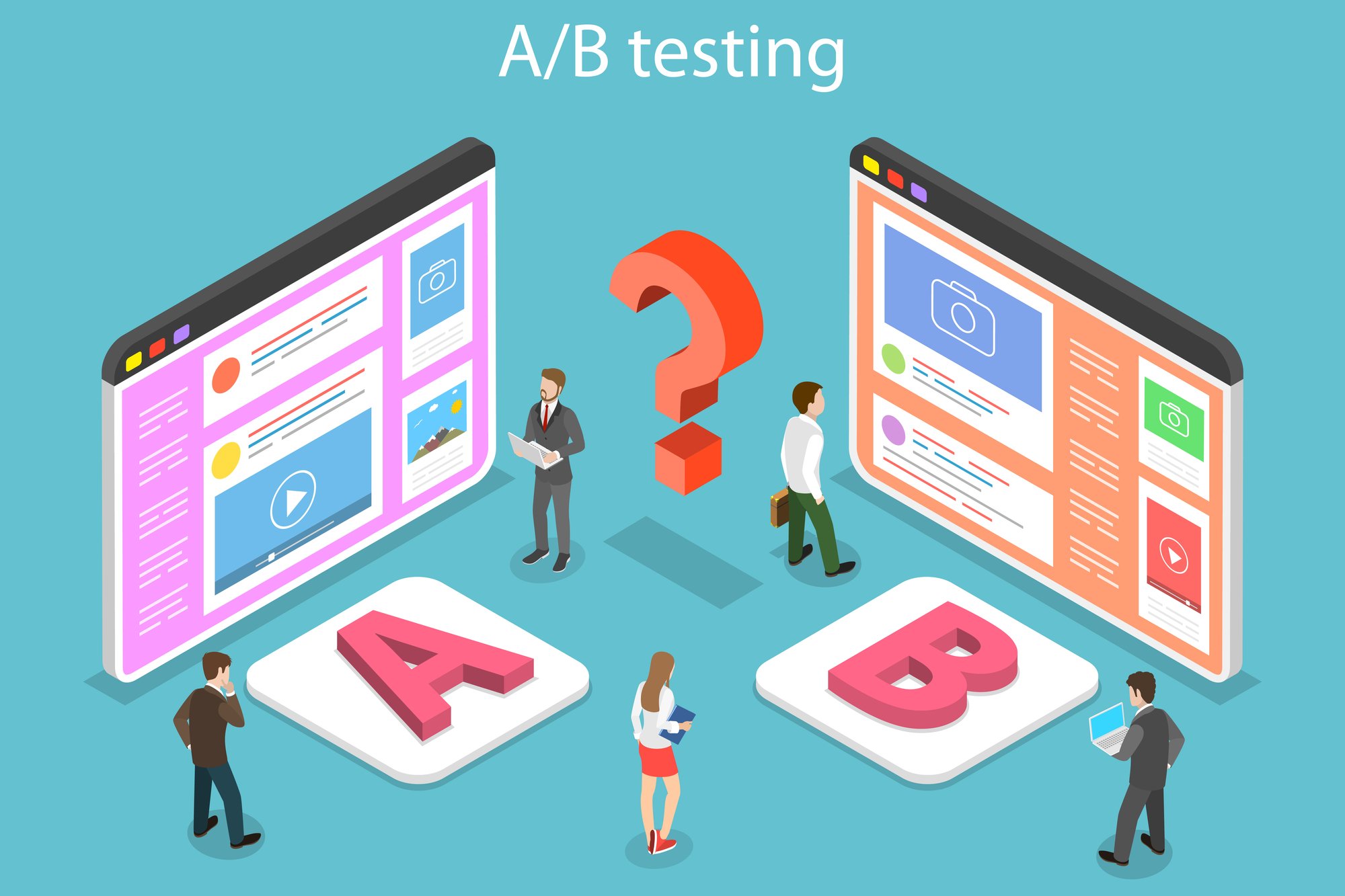
Understanding A/B Testing, Its Importance, and Effective Strategies

Read on to learn about the basics of A/B Testing, how it works, the importance of A/B test tools, and some tips for setting up A/B tests effectually.
The Basics of A/B Testing in Marketing
A/B Testing is a method of comparing two versions of a product, such as a webpage, mobile app, or other digital assets, to determine which one performs better. It involves randomly dividing users into two groups, with one group being shown the "A" version and the other as the "B" version.
The effectiveness of the two versions is then measured through metrics such as clicks, conversions, or time on site, and the version that performs better is selected for further development. A/B Testing, also known as Split Testing or Bucket Testing, allows for data-driven decision-making and helps ensure that improvements to a product are based on actual user behavior.
A simple scenario for comparing and contrasting two variants to identify the best approach in digital marketing could be for a company that wants to optimize the call-to-action (CTA) button on its website's landing page. The company would create two versions of the page, version A with the original CTA button and version B with a new design for the CTA button. They would then randomly show half of their website visitors version A and the other half version B and track the number of clicks on the CTA button for each version. If more visitors to version B click the CTA button, the company may conclude that the new button design is more effective in contrast to the old one and implement it for all visitors to their website.
How Does A/B Testing Work?
As mentioned, A/B Testing is a method of comparing two versions of a product or marketing campaign to identify the higher-performing variation. By comparing the performance of the two versions, marketers can determine which version is more effective in terms of metrics such as conversion rate, click-through rate, or engagement. Briefly, here is how it works:
- Identify a metric to measure: This could be anything from website clicks to conversion rates.
- Create two versions: Version A (control group) and Version B (test group). These can be variations of a website, an email, or a product feature.
- Randomly divide audience: The target audience is divided into two groups, with each group seeing one of the two versions.
- Measure results: The results of each version are collected and compared using the chosen metric.
- Make a decision: Based on the results, the marketer can determine which version performed better and make informed decisions on future marketing efforts.
- Repeat: The process can be repeated as many times as necessary to improve marketing efforts continuously.
Analyzing two variants of a marketing solution or system allows marketers to make data-driven decisions and continually optimize their efforts for maximum impact.
The Importance of A/B Tests

Split Testing benefits marketers because it allows them to make data-driven decisions about their digital assets. By comparing and contrasting different versions of a web page, email, or other digital asset, marketers can determine which version is most effective in terms of driving conversions, engagement, or other key metrics. This allows them to optimize their marketing efforts, increase conversion rates, and ultimately improve their return on investment.
A/B Tests also allow marketers to make incremental improvements to their digital assets over time rather than making major changes without knowing the impact. Additionally, split tests allow marketers to avoid costly mistakes and ensure that the changes they make will lead to better results.
In particular, A/B Tests offers the following benefits for marketers:
- Data-Driven Decision Making: By analyzing different variations of campaigns, websites, or product features, A/B tests enable marketers to make informed decisions based on data rather than assumptions.
- Improved Conversion Rates: By continually optimizing efforts through split tests, marketers can increase conversion rates and ultimately improve their return on investment.
- Customer Insight: Split tests allow marketers to better understand their target audience and what resonates with them.
- Continuous Improvement: Split Testing is an ongoing process, allowing marketers to continually refine and improve their efforts.
What are A/B Testing Tools?
As you learned above, split testing is one of the most helpful marketing techniques in digital marketing today. The tools that make A/B tests possible provide immense power to make the experimentation process more effective. A/B testing tools are software that allows marketers to easily create and run A/B tests on their digital assets. There are many helpful tools for comparison and performance analysis of two variants currently available, including:
- AB Tasty: A platform that allows you to create and run an experiment test on your website, mobile app, and other digital assets.
- Google Optimize: A free tool from Google that allows you to run split tests on your website and track the results in Google Analytics.
- Optimizely: A platform that allows you to create and run A/B tests on your website, mobile app, and other digital assets.
- Unbounce: A platform that allows you to create, test, and publish landing pages.
- Visual Website Optimizer (VWO): A platform that allows you to create and run split tests on your website, mobile app, and other digital assets.
A/B Testing tools can help streamline the process and provide marketers with valuable insights and data-driven recommendations. These tools offer easy-to-use interfaces, detailed reporting, and the ability to analyze multiple variables simultaneously, making the randomized experimentation process more efficient and effective. By leveraging these tools, marketers can focus on making data-driven decisions and optimizing their marketing efforts. Specifically, here are some ways such tools can be of help:
- Experiment setup: A/B test tools provide an easy-to-use interface for setting up experiments, including defining control and variation groups, setting targeting rules, and determining success metrics.
- Traffic allocation: The tools automatically allocate visitors to different variations, taking into account things like traffic distribution, visitor behavior, and conversion rates.
- Data collection and analysis: Split testing tools collect and store data from each variation and provide graphical and numerical analysis of the results, making it easier to determine which version performed better.
- Integration: A/B testing tools integrate with other tools, such as analytics, CRM, and marketing automation, to provide a comprehensive view of the results and their impact on the business.
- Scalability: Tools designed for split tests allow you to run multiple experiments simultaneously and handle large amounts of traffic, making it easier to scale up your experimentation efforts as your business grows.
Hubspot and Marketo, for instance, allow marketers to create and test multiple variations of elements such as emails, landing pages, and CTAs. Both platforms randomly divide the target audience into groups, ensuring a fair test and accurate results.
Hubspot and Marketo provide real-time reporting and analytics on the performance of each variation, including metrics such as open rate, click-through rate, and conversion rate. Both offer an intuitive interface that makes it easy for marketers to set up and manage split-run tests, even for those with limited technical experience.
In addition, Hubspot and Marketo integrate with a range of other marketing and sales tools, providing a comprehensive solution for marketing teams. Both marketing automation platforms allow marketers to test multiple variables at once, providing a broader view of the impact of different changes.
Of course, you will find a lot of split testing tools, with different versions, out there. While there are certainly some industry favorites, choosing the right tools should come down to what your specific businesses require and the marketing goal you want to achieve.
Strategies to Carry Out Effective A/B Tests

Aside from using the right A/B testing tools to automate and simplify various tasks in the experimentation process, here are some tips for marketers to effectively compare and contrast the performance of two different approaches:
- Clearly define your goal: Determine what you want to achieve with your A/B test and make sure the test is designed to answer a specific question.
- Test one variable at a time: To accurately determine the impact of a change, it is important to test one variable at a time.
- Choose a large enough sample size: Make sure your target audience is large enough to get statistically significant results from your test.
- Test for a sufficient amount of time: Give each test variation enough time to run and gather data before making a decision.
- Use a control group: Make sure to include a control group, which is the original version of the element being tested, for comparison.
- Analyze the results: Make sure to carefully analyze the results of each test, considering both qualitative and quantitative data.
- Repeat the process: A/B Testing is a continuous process, so continue to test and optimize to continually improve your marketing efforts.
Split tests offer marketers a 'scientific approach' in structuring and designing marketing campaigns, as well as in determining whether or not the adjustment that leads to an increased conversion is truly significant or simply a random flux. By following these tips, marketers can ensure they are experimenting effectively and making data-driven decisions to improve their marketing efforts.
Conclusion
A/B Testing allows marketers to validate assumptions and make informed decisions, leading to more effective marketing strategies. When conducting A/B Tests as a marketer, it is crucial to define a clear objective and utilize tools and statistical methods to find out if the results are significant instead of relying on anecdotal observations.
Use the outcomes of the test to make informed decisions about which version of the product to implement and improve. You can also use the results to determine which of your marketing channels are working and which ones need to catch up. This is arguably the beauty of data-driven marketing!
